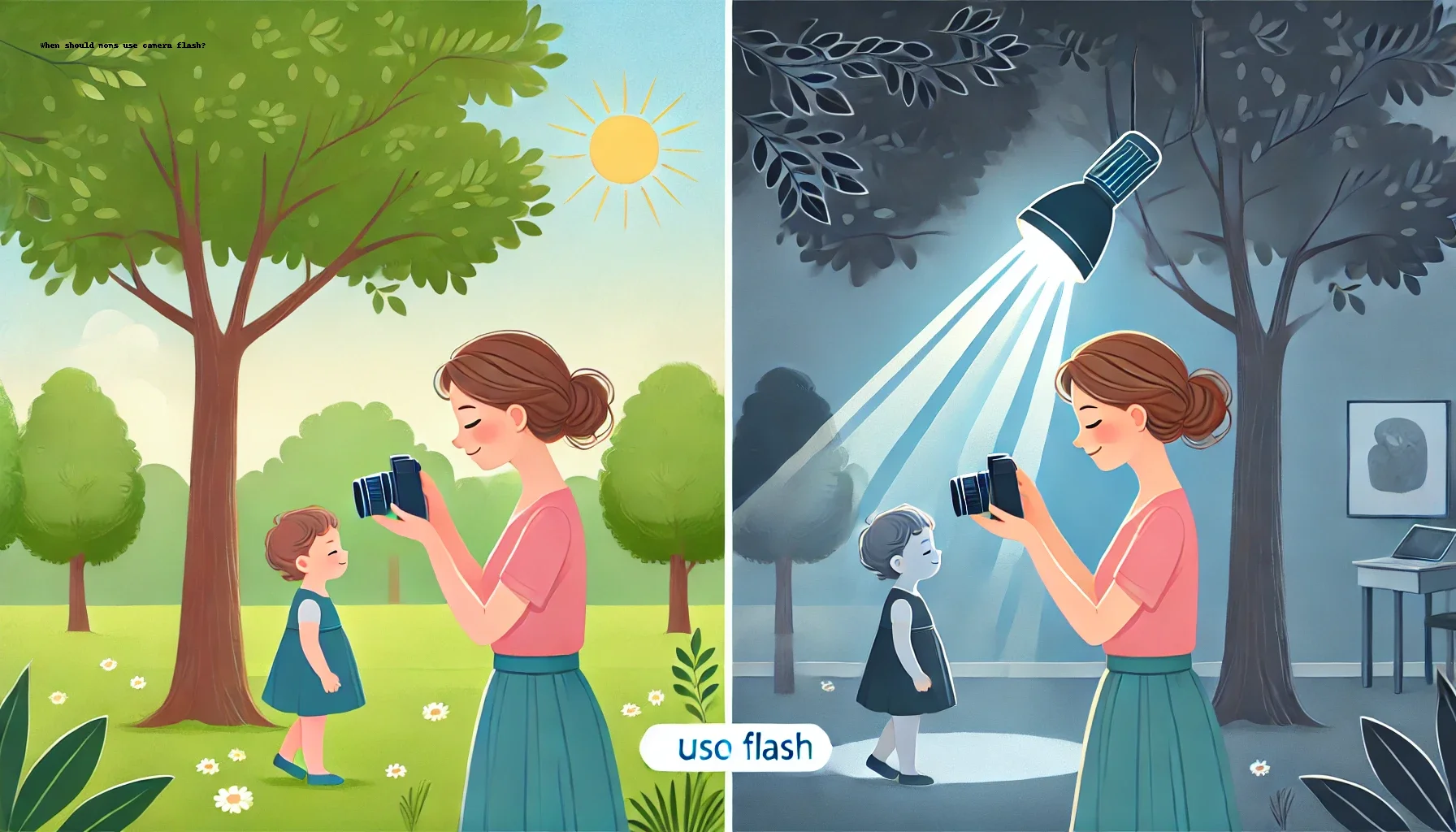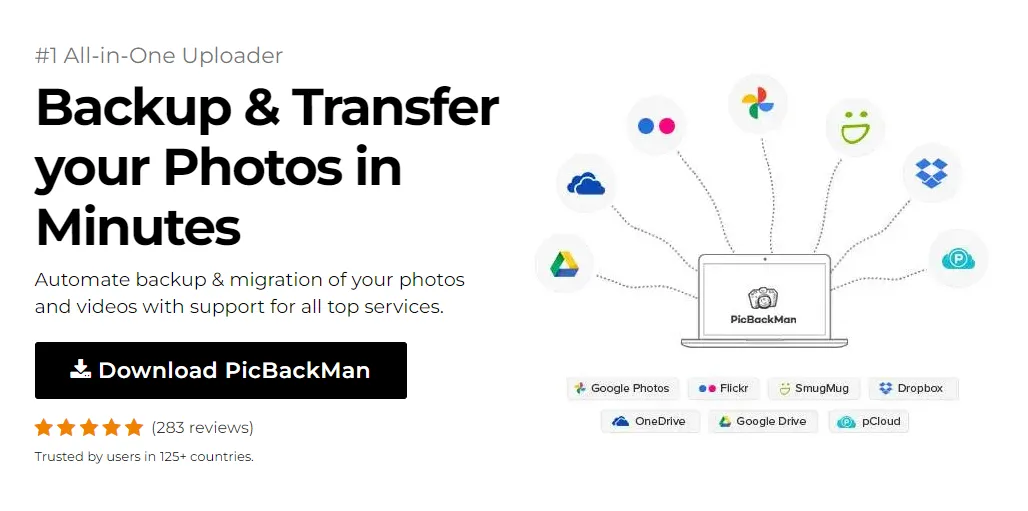
When should moms use camera flash?


As a new mom, capturing every precious moment of your baby's life becomes a top priority. From first smiles to wobbly steps, these fleeting instances deserve to be preserved in the best quality possible. However, navigating the world of photography, especially when it comes to using flash, can be daunting. This comprehensive guide will explore when moms should use camera flash, providing expert tips and insights to help you capture stunning photos of your little one while ensuring their comfort and safety.
The question of when moms should use camera flash is crucial for capturing high-quality photos of their babies. Generally, flash should be used in low-light situations where natural light is insufficient to properly illuminate your subject. This could include indoor settings, especially during evening hours or in rooms with limited windows. Flash can help freeze motion, reduce blur, and bring out the vibrant colors of your baby's features.
However, it's important to note that flash should be used judiciously. Excessive or improper use of flash can lead to harsh shadows, unnatural-looking skin tones, and potentially startle your baby. The key is to find the right balance between using flash to enhance your photos and maintaining a comfortable environment for your little one.
Some specific situations when moms should consider using camera flash include:
- Indoor birthday parties or celebrations
- Evening or nighttime photo sessions
- Capturing fast-moving moments, like crawling or playing
- Photographing in dimly lit rooms or during cloudy days
- Creating artistic effects or highlighting specific features
Remember, the goal is to use flash as a tool to enhance your photos, not as a crutch for every shot. As you become more comfortable with your camera and lighting techniques, you'll develop an intuition for when flash will truly benefit your images.
Before diving deeper into when and how to use flash, it's essential to understand the different types of camera flashes available to moms. This knowledge will help you make informed decisions about which flash to use and when.
Built-in Camera Flash
Most point-and-shoot cameras and smartphones come equipped with a built-in flash. While convenient, these flashes have limitations:
- Limited power and range
- Can create harsh shadows and red-eye effect
- Often produce a flat, unflattering light
Despite these drawbacks, built-in flashes can be useful in a pinch, especially for casual, spontaneous shots.
External Flash Units
External flash units, also known as speedlights, offer more power and versatility:
- Can be adjusted and angled for softer, more flattering light
- Provide greater control over light intensity and direction
- Allow for creative lighting techniques like bounce flash
For moms serious about photography, investing in an external flash can significantly improve the quality of their baby photos.
Continuous Lighting
While not technically a flash, continuous lighting setups can be an excellent alternative:
- Provide constant illumination, allowing you to see the effect before taking the photo
- Ideal for video recording
- Can be less startling for babies compared to sudden flashes
Understanding these options will help you choose the right lighting solution for different photography scenarios.
The Impact of Flash on Baby's Eyes
One of the most common concerns among parents is whether camera flash can harm their baby's eyes. Let's address this important topic with factual information to put your mind at ease.
Is Flash Safe for Babies?
The good news is that modern camera flashes are generally safe for babies when used properly. The light emitted by a typical camera flash is not intense enough to cause permanent damage to a baby's eyes. However, it's important to consider the following:
- Avoid using flash excessively or at very close range
- Be mindful of your baby's comfort and reactions
- Use diffusers or bounce techniques to soften the light
Developmental Considerations
While flash itself isn't harmful, it's worth noting that babies' eyes and visual systems are still developing:
- Newborns may be more sensitive to bright lights
- Babies may blink or turn away from sudden flashes
- As babies grow, they become more accustomed to various light conditions
Understanding these factors will help you use flash responsibly and ensure a positive photography experience for both you and your baby.
Alternatives to Direct Flash
While knowing when moms should use camera flash is important, it's equally valuable to explore alternatives that can produce beautiful photos without relying solely on direct flash.
Natural Light Photography
Harnessing natural light can result in stunning, soft images:
- Position your baby near windows for gentle, diffused light
- Use sheer curtains to soften harsh sunlight
- Experiment with different times of day for varied lighting effects
Reflectors and Diffusers
These simple tools can dramatically improve your photos:
- Use white reflectors to bounce light onto your baby's face
- Employ diffusers to soften harsh sunlight or flash
- Create DIY versions using white foam board or translucent fabric
Continuous Lighting Setups
As mentioned earlier, continuous lighting can be an excellent alternative to flash:
- Set up softboxes or LED panels for controlled, consistent light
- Experiment with different color temperatures for varied moods
- Use dimmable lights to adjust intensity based on your baby's comfort
By exploring these alternatives, you'll expand your photography skills and have more options for capturing beautiful images of your little one.
Camera Settings for Flash Photography
Understanding your camera's settings is crucial for achieving the best results when using flash. Let's explore the key settings you should be familiar with:
Flash Sync Speed
This is the fastest shutter speed at which your camera can synchronize with the flash:
- Typically ranges from 1/60 to 1/250 of a second
- Exceeding this speed can result in partially exposed images
Flash Compensation
This setting allows you to adjust the power of your flash:
- Increase flash power for darker environments
- Decrease power to avoid overexposure in close-up shots
Slow Sync Flash
This technique combines a slow shutter speed with flash:
- Captures ambient light in the background
- Creates a more natural-looking image with balanced lighting
Rear Curtain Sync
This setting fires the flash at the end of the exposure:
- Ideal for capturing movement
- Creates a more natural look for action shots
Understanding and experimenting with these settings will give you greater control over your flash photography, allowing you to capture stunning images of your baby in various lighting conditions.
Tips for Using Flash with Babies
Now that we've covered the technical aspects, let's focus on practical tips for using flash when photographing babies:
Gradual Introduction
Introduce flash gradually to help your baby become accustomed to it:
- Start with low-power flash settings
- Use flash less frequently at first, increasing usage over time
- Watch for signs of discomfort or distress
Timing is Everything
Choose the right moments to use flash:
- Avoid using flash when your baby is sleepy or cranky
- Take advantage of alert, happy times for photo sessions
- Be prepared to capture spontaneous moments quickly
Distraction Techniques
Keep your baby engaged during photo sessions:
- Use toys or interesting objects to hold their attention
- Have a helper make funny faces or sounds
- Sing songs or play peekaboo to elicit natural smiles
Safety First
Prioritize your baby's safety and comfort:
- Never leave your baby unattended with photography equipment
- Ensure all stands and tripods are stable
- Keep cords and small accessories out of reach
By following these tips, you'll create a positive and safe environment for photographing your baby with flash.
Creative Flash Techniques for Baby Photography
Once you're comfortable with basic flash usage, you can explore more creative techniques to elevate your baby photos:
Bounce Flash
This technique involves bouncing the flash off a ceiling or wall:
- Creates softer, more natural-looking light
- Reduces harsh shadows and red-eye effect
- Works well in rooms with light-colored walls and ceilings
Fill Flash
Use flash to fill in shadows in bright environments:
- Balances harsh sunlight in outdoor settings
- Helps capture detail in backlit situations
- Creates a more even exposure across the image
Off-Camera Flash
Experiment with positioning your flash away from the camera:
- Allows for more dramatic lighting effects
- Can create depth and dimension in your photos
- Requires additional equipment like triggers or sync cords
Colored Gels
Add creative color effects to your flash:
- Use gels to match ambient lighting or create mood
- Experiment with complementary colors for artistic effects
- Be cautious not to overuse, as it can distract from your baby
These techniques can help you create unique and stunning images of your baby, taking your photography to the next level.
Common Mistakes to Avoid When Using Flash
Even experienced photographers can make mistakes when using flash. Here are some common pitfalls to watch out for:
Overusing Flash
Relying too heavily on flash can lead to unnatural-looking photos:
- Try to balance flash with available light when possible
- Consider alternatives like reflectors or continuous lighting
- Use flash judiciously to maintain a natural look
Ignoring Background
Flash can sometimes create distracting backgrounds:
- Be aware of shadows cast on walls behind your subject
- Consider the overall scene, not just your baby
- Use wider apertures to blur potentially distracting backgrounds
Incorrect Flash Power
Using too much or too little flash power can ruin a photo:
- Start with lower power settings and adjust as needed
- Use flash compensation to fine-tune the amount of light
- Consider the distance between the flash and your baby
Neglecting to Diffuse
Direct flash can create harsh lighting:
- Use diffusers or bounce techniques for softer light
- Experiment with homemade diffusers like tissue paper
- Consider investing in a softbox for more professional results
By avoiding these common mistakes, you'll be well on your way to capturing beautiful, well-lit photos of your baby.
Post-Processing Flash Photos
Even with perfect technique, flash photos often benefit from some post-processing. Here are some tips for enhancing your flash photography:
Adjusting White Balance
Flash can sometimes create a cool color cast:
- Use your editing software's white balance tools to correct color
- Consider using a custom white balance setting in-camera
- Experiment with different color temperatures for creative effects
Reducing Red-Eye
Direct flash can cause the dreaded red-eye effect:
- Use your editing software's red-eye removal tool
- Prevent red-eye by using off-camera or bounce flash techniques
- Consider using your camera's red-eye reduction mode
Balancing Exposure
Flash can sometimes create uneven exposure:
- Use adjustment brushes to brighten or darken specific areas
- Experiment with graduated filters to balance foreground and background
- Consider HDR techniques for challenging lighting situations
Softening Harsh Shadows
Direct flash can create unflattering shadows:
- Use the shadow/highlight tool to recover detail in dark areas
- Experiment with selective brightening to reduce shadow intensity
- Consider using multiple exposures and blending in post-processing
Remember, post-processing should enhance your photos, not completely change them. Aim for natural-looking results that showcase your baby's true beauty.
Building a Photography Kit for Moms
As you become more invested in capturing high-quality photos of your baby, you might consider building a photography kit. Here are some essential items to consider:
Camera Body
Choose a camera that fits your needs and budget:
- DSLR or mirrorless cameras offer the most control and quality
- Advanced point-and-shoot cameras can be a good compromise
- Modern smartphones can produce excellent results with proper technique
Lenses
Invest in versatile lenses for different situations:
- A 50mm prime lens is great for portraits and low-light situations
- A zoom lens (e.g., 24-70mm) offers flexibility for various compositions
- A macro lens can capture beautiful details of your baby
Lighting Equipment
Build your lighting kit gradually:
- Start with an external flash unit for more power and control
- Consider a set of continuous LED lights for video and still photography
- Invest in reflectors and diffusers for softer, more flattering light
Accessories
Don't forget these helpful extras:
- A sturdy tripod for stability and self-portraits
- Extra batteries and memory cards
- A comfortable camera bag for on-the-go photography
Remember, you don't need to buy everything at once. Start with the basics and add to your kit as your skills and needs evolve.
Preserving and Sharing Your Baby Photos
Once you've captured those perfect flash photos of your baby, it's important to preserve and share them effectively:
Backup Strategies
Protect your precious memories:
- Use cloud storage services for automatic backups
- Invest in external hard drives for local copies
- Consider printing important photos for physical backups
Organizing Your Photos
Keep your growing collection manageable:
- Use photo management software to tag and categorize images
- Create a consistent naming convention for easy searching
- Regularly cull and delete unnecessary duplicates
Sharing Safely
Share your photos while protecting your baby's privacy:
- Be mindful of what you post on social media
- Use private sharing services for family and close friends
- Consider creating a password-protected online gallery
Creating Keepsakes
Turn your digital memories into tangible treasures:
- Create photo books to document your baby's growth
- Print and frame special photos for your home
- Design custom gifts like calendars or canvas prints
By implementing these strategies, you'll ensure that your beautiful flash photos of your baby are preserved and shared for years to come.
Quick Tip to ensure your videos never go missing
Videos are precious memories and all of us never want to ever lose them to hard disk crashes or missing drives. PicBackMan is the easiest and simplest way to keep your videos safely backed up in one or more online accounts. Simply Download PicBackMan (it's free!), register your account, connect to your online store and tell PicBackMan where your videos are - PicBackMan does the rest, automatically. It bulk uploads all videos and keeps looking for new ones and uploads those too. You don't have to ever touch it.
FAQs
When should I use camera flash?
You should use camera flash in low-light situations, such as indoor settings or during evening hours, when natural light is insufficient. Flash is also useful for filling in harsh shadows in bright environments, freezing motion in action shots, or adding a catchlight to the eyes in portraits. However, it's important to use flash judiciously and consider the overall lighting conditions to achieve the most natural-looking results.
Do you use flash for birth photography?
Flash use in birth photography is a delicate subject and often discouraged. Many hospitals and birthing centers have policies against flash photography during labor and delivery. It can be disruptive to the birthing process and uncomfortable for the mother and newborn. Instead, photographers typically rely on high ISO settings, wide apertures, and steady hands to capture these intimate moments in available light. If flash is absolutely necessary, it should be used sparingly and with the explicit permission of all involved.
When can you use a flash with a baby?
You can use flash with a baby, but it's important to do so carefully and considerately. Wait until the baby is at least a few weeks old before introducing flash, as newborns' eyes are particularly sensitive. Use flash sparingly, at a distance, and preferably bounced off a wall or ceiling to soften the light. Always monitor your baby's reactions and stop if they show signs of discomfort. It's often best to rely on natural light when possible, especially for younger babies.
When and when not to use flash on film camera?
Use flash on a film camera in low-light situations, for fill light in backlit scenes, or to freeze action. Avoid using flash when photographing reflective surfaces, through glass, or in situations where you want to preserve the natural ambiance of a scene. Also, be mindful of flash sync speeds on older film cameras, which may limit your shutter speed options. In well-lit outdoor scenes, flash is generally unnecessary on film cameras unless you're using it for creative effect.
Should I use flash in daylight?
Using flash in daylight, often called "fill flash," can be very effective. It helps to fill in harsh shadows on a subject's face in bright sunlight, balances exposure in backlit situations, and can add a catchlight to the eyes. However, use it judiciously and at reduced power to avoid overexposure. In many daylight situations, especially on overcast days or in shade, flash may not be necessary unless you're going for a specific creative effect.
When and when not to use flash on disposable camera?
Use flash on a disposable camera in low-light situations, such as indoors or at night. It's also helpful for filling in shadows in bright, contrasty light. Avoid using flash when photographing distant subjects (as the flash won't reach them), through glass (to prevent reflections), or in situations where you want to capture the natural ambiance. Keep in mind that disposable camera flashes are typically not very powerful and have a limited range, so they're most effective for nearby subjects.
Conclusion
Understanding when moms should use camera flash is crucial for capturing beautiful, high-quality photos of your baby. By mastering the technical aspects of flash photography, exploring creative techniques, and being mindful of your baby's comfort, you can create stunning images that preserve precious memories for a lifetime.
Remember that practice makes perfect. Don't be afraid to experiment with different lighting techniques, camera settings, and post-processing methods. Each baby and situation is unique, so what works best may vary. Trust your instincts, prioritize your baby's well-being, and enjoy the process of documenting these fleeting moments.
As you continue your photography journey, keep learning and adapting your techniques. The world of photography is constantly evolving, with new technologies and creative approaches emerging regularly. Stay curious, join photography communities for support and inspiration, and most importantly, have fun capturing the joy and wonder of your baby's early years.
With the knowledge and tips provided in this guide, you're well-equipped to make informed decisions about when and how to use camera flash. So grab your camera, get creative, and start capturing those priceless moments with confidence!
Backup & Transfer your Photos in Minutes
Automate backup & migration of your photos & videos with support for all top services.
Trusted by users in 125+ countries.










